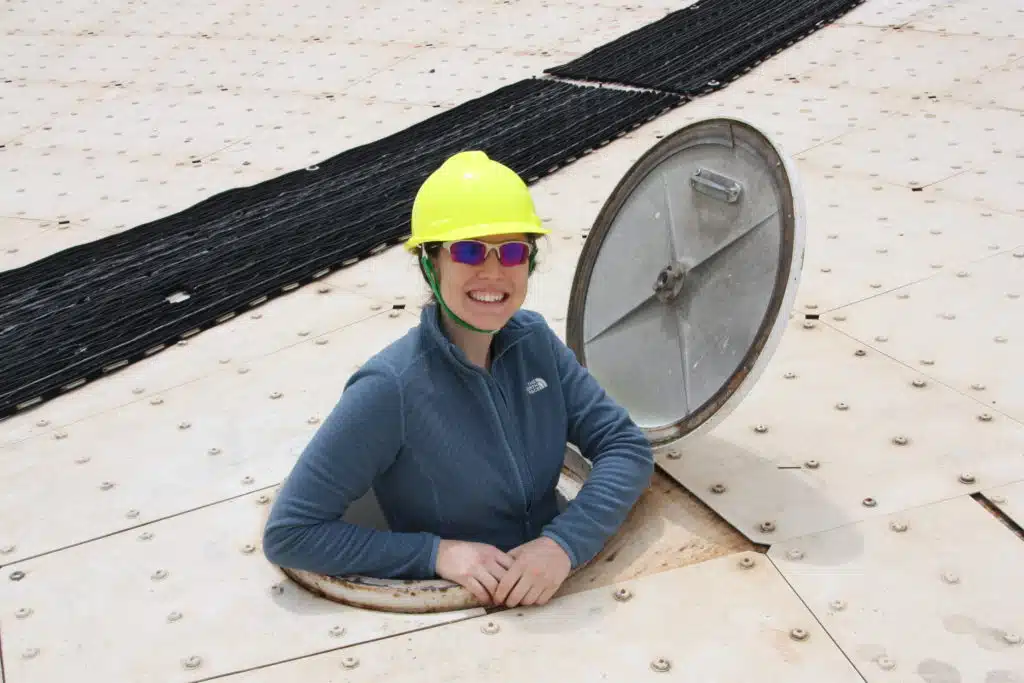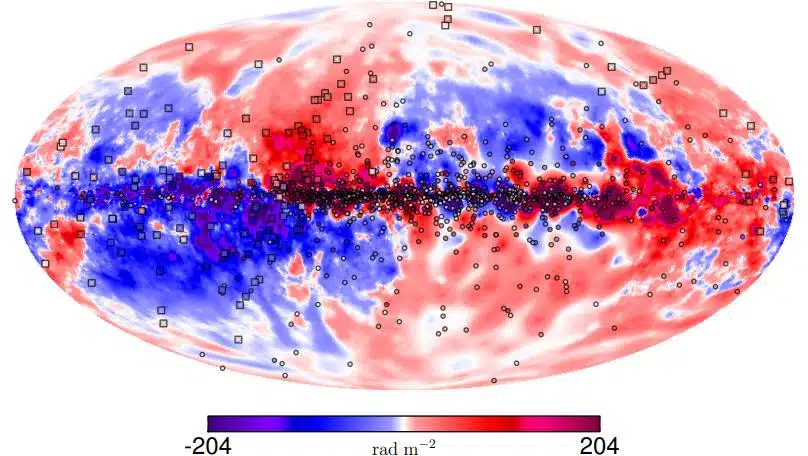Mapping our galaxy’s magnetic field

Astronomers from CSIRO and Curtin University have used pulsars to probe the Milky Way’s magnetic field. Working with colleagues in Europe, Canada, and South Africa, they have published the most precise catalogue of measurements towards mapping our Galaxy’s magnetic field in 3-D.
The Milky Way’s magnetic field is thousands of times weaker than Earth’s, but is of great significance for tracing the paths of cosmic rays, star formation, and many other astrophysical processes. However, our knowledge of the Milky Way’s 3-D structure is limited.
Dr Charlotte Sobey, the lead author of the research paper, said “We used pulsars (rapidly-rotating neutron stars) to efficiently probe the Galaxy’s magnetic field in 3-D. Pulsars are distributed throughout the Milky Way, and the intervening material in the Galaxy affects their radio-wave emission.”
Using a large European radio telescope called LOFAR (the Low-Frequency Array), the team assembled the largest low-frequency catalogue of magnetic field strengths and directions towards pulsars, to date. The results were used to estimate how the Galactic magnetic field strength decreases with distance from the plane of the Galaxy (where the spiral arms are).
Charlotte said “This is an indication of the great results that we can achieve using the next-generation of radio telescopes. Since we cannot observe our entire Galaxy from one place on Earth, we are now using the MWA (Murchison Widefield Array) in Western Australia to observe pulsars in the southern sky.”
LOFAR and the MWA are pathfinder and precursor telescopes, respectively, to the low-frequency component of the SKA (Square Kilometre Array) – part of the world’s largest radio telescope that will be constructed in Western Australia. These telescopes are a stepping stone towards the SKA, which will revolutionise our understanding of our Galaxy, plus much more!
This work was presented at Fresh Science WA 2019 and published earlier this year in Sobey, et al., Monthly Notices of the Royal Astronomical Society, Volume 484, Issue 3, April 2019, Pages 3646–3664, available at: https://doi.org/10.1093/mnras/stz214 https://ui.adsabs.harvard.edu/abs/2019MNRAS.484.3646S
or go to – https://www.skatelescope.org/multimedia/video/australian-ska-fly/


Further Reading:
Sobey et al. 2019. Low-frequency Faraday rotation measures towards pulsars using LOFAR: probing the 3D Galactic halo magnetic field. Monthly Notices of the Royal Astronomical Society (MNRAS). 484(3):3646-3664. https://doi.org/10.1093/mnras/stz214
Sotomayor-Beltran, C.; Sobey, C., et al. 2013. Calibrating high-precision Faraday rotation measurements for LOFAR and the next generation of low-frequency radio telescopes. Astronomy & Astrophysics (A&A), Volume 552, id.A58, 13 pp. https://doi.org/10.1051/0004-6361/201220728
Xue et al. 2019. MWA Tied-Array Processing II: Polarimetric Verification and Analysis of two Bright Southern Pulsars. Publications of the Astronomical Society of Australia (PASA), Volume 36, id. e025. https://doi.org/10.1017/pasa.2019.19





 Fresh Science is on hold for 2022. We will be back in 2023.
Fresh Science is on hold for 2022. We will be back in 2023.